It’s all too easy to fall in love with shatta. Since making it the first time, I now tend to keep a jar of it in the fridge at all times. Luckily, it’s easy enough to make.
What is shatta?
Shatta is a fermented chili condiment – or hot sauce, if you like. It’s particularly popular in Palestine, but you’ll find it elsewhere in the Middle East, too.
There are two versions: Red and green. The main difference is the colour of the chiles, which shouldn’t be mixed. Kept separate, you’ll get jars of vibrant red or green. Mix, and you’ll get a brown mush.
The spiciness of shatta can vary considerably, depending on the chiles used. Homemade shatta tend to end up being hotter than commercial varieties, but if your peppers are hotter than you can handle, you can always mix in a little sweet pepper to control the heat.
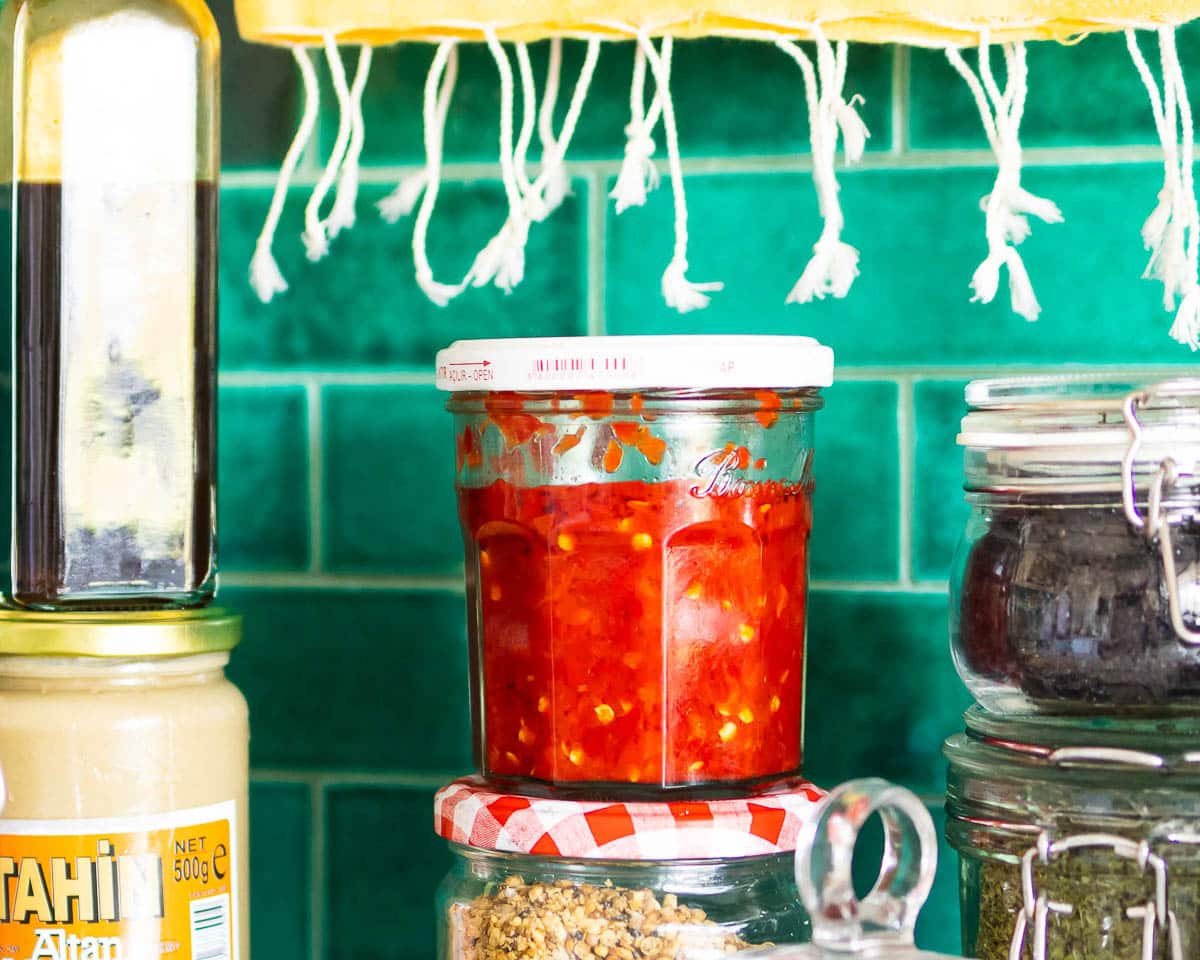
How shatta is made
Shatta needs just three ingredients: chili, salt and olive oil. Salt to help the fermentation, and olive oil for consistency and preservation.
The hot peppers are traditionally sun dried. In modern times, other methods help speed the process along.
The most common way of making home made shatta is to leave the chilies for a short time on the kitchen counter, to draw out water and start the fermentation process. After a couple of days, you simply drain it and add vinegar to the mix instead. Much more practical for mos of us. This is the method that I use.
Some like to add herbs or spices to the mix, but I prefer my shatta plain.
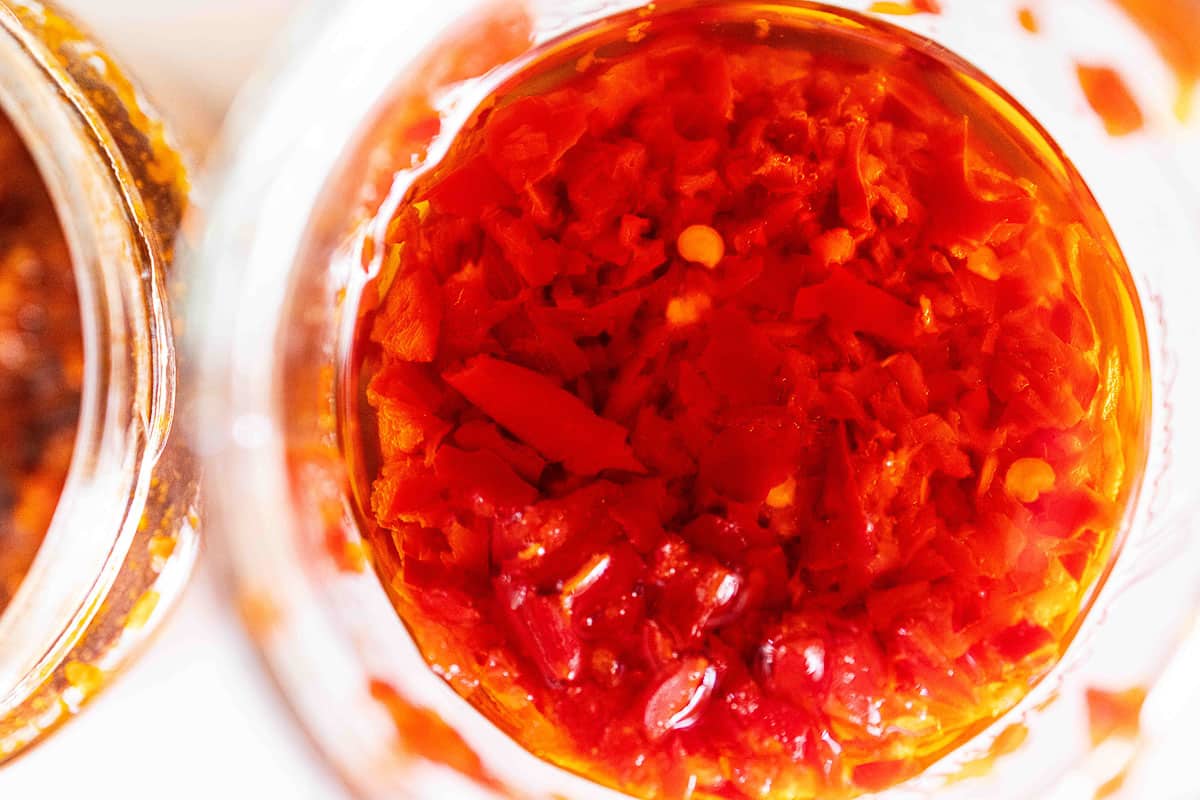
What I like to use it with
Since it’s fairly fresh and usually not spiced, shatta is incredibly versatile. It’s an effortless way to add a fresh chili kick to just about anything.
It goes really well with fish or roast vegetables that are otherwise quite simply prepared. I also like it with hummus and falafel! But it also works wonders on meat, particularly fattier cuts that needs a sharp contrast. And why not with roast chicken?
I use it less as an ingredient in the cooking itself. I don’t add shatta to my stews or braises, for example. In those instances, I tend to opt for chili flakes, Turkish red pepper paste, harissa or, indeed, fresh chilies.
This recipe makes a small jar of shatta, which you’ll certainly use up quicker than you think.
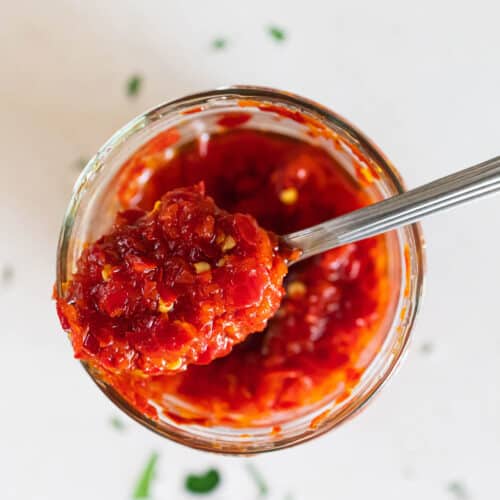
Red shatta (Palestinian chili condiment)
Ingredients
- 200 g red chili peppers, roughly chopped
- 2 tsp fine sea salt, 2 1/2 tsp if using kosher salt
- 2 Tbsp white wine vinegar, or another good vinegar
- 2 Tbsp extra virgin olive oil, plus extra for topping
How I make it
- Crush the chili peppers with the salt until it’s chunky, but without large pieces. You can use a stick blender, kitchen machine or a pestle and mortar for this. Transfer to a clean jar. Place the lid on top, but do not screw it closed. Leave on the kitchen counter for 48 hours.
- Empty the jar into a clean sieve set over a bowl. Leave to drain for a few minutes.
- Return the drained chilies to the jar. Add the vinegar and enough olive oil to make a saucy consistency.
- Cover with a layer of olive oil, screw the lid tight and place in the fridge. It’s good to use immediately, but the flavour will be improved if you leave it for at least a week before diving in.


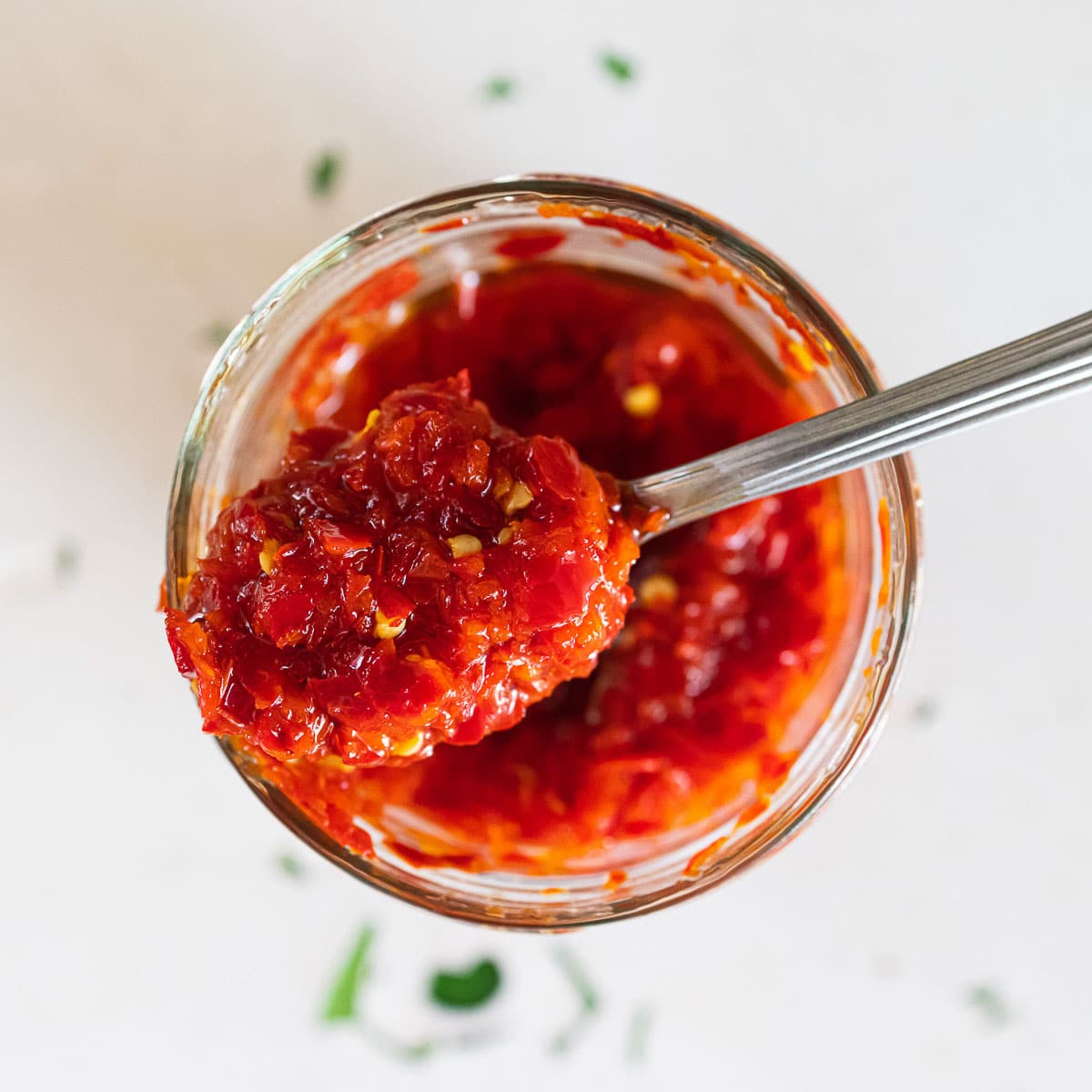


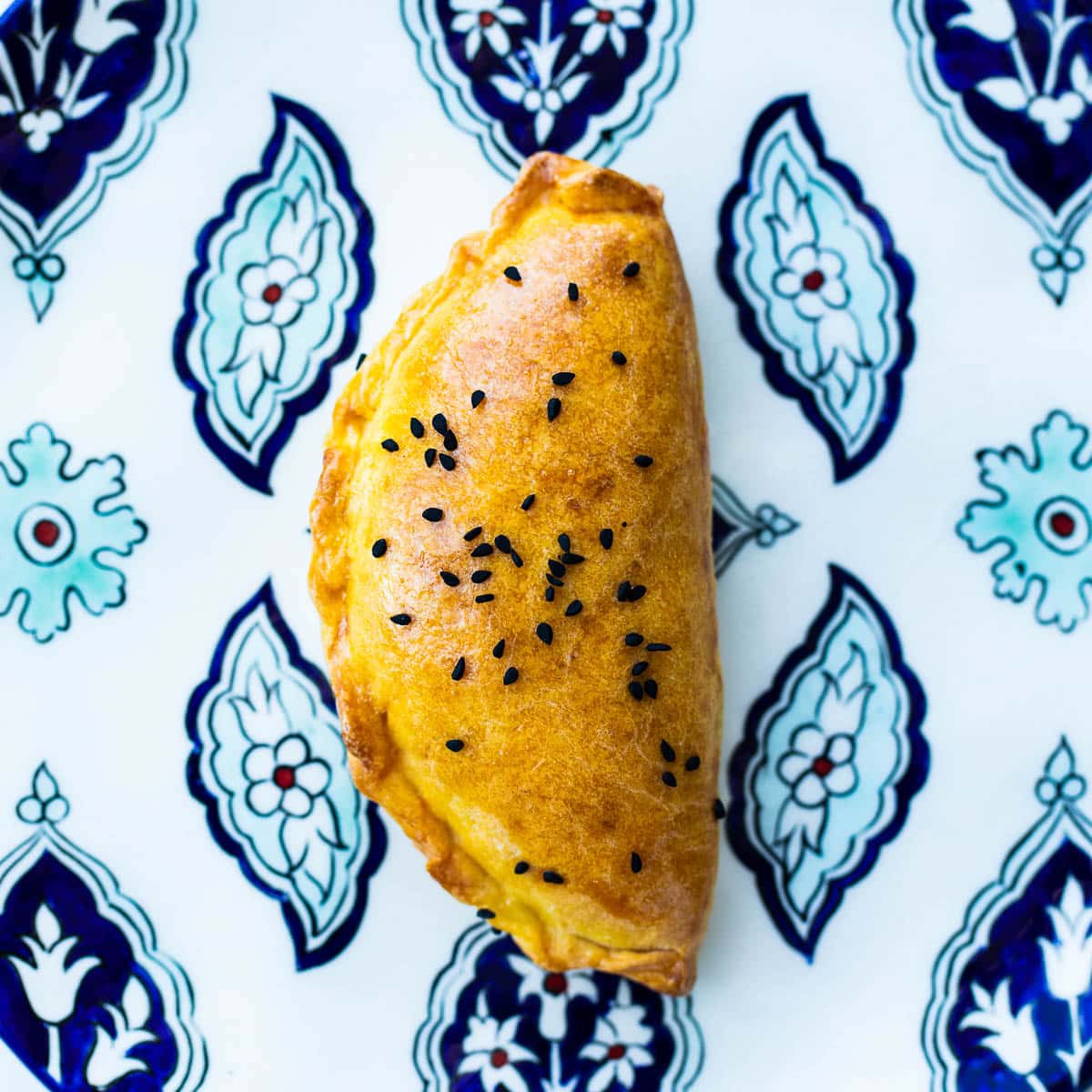
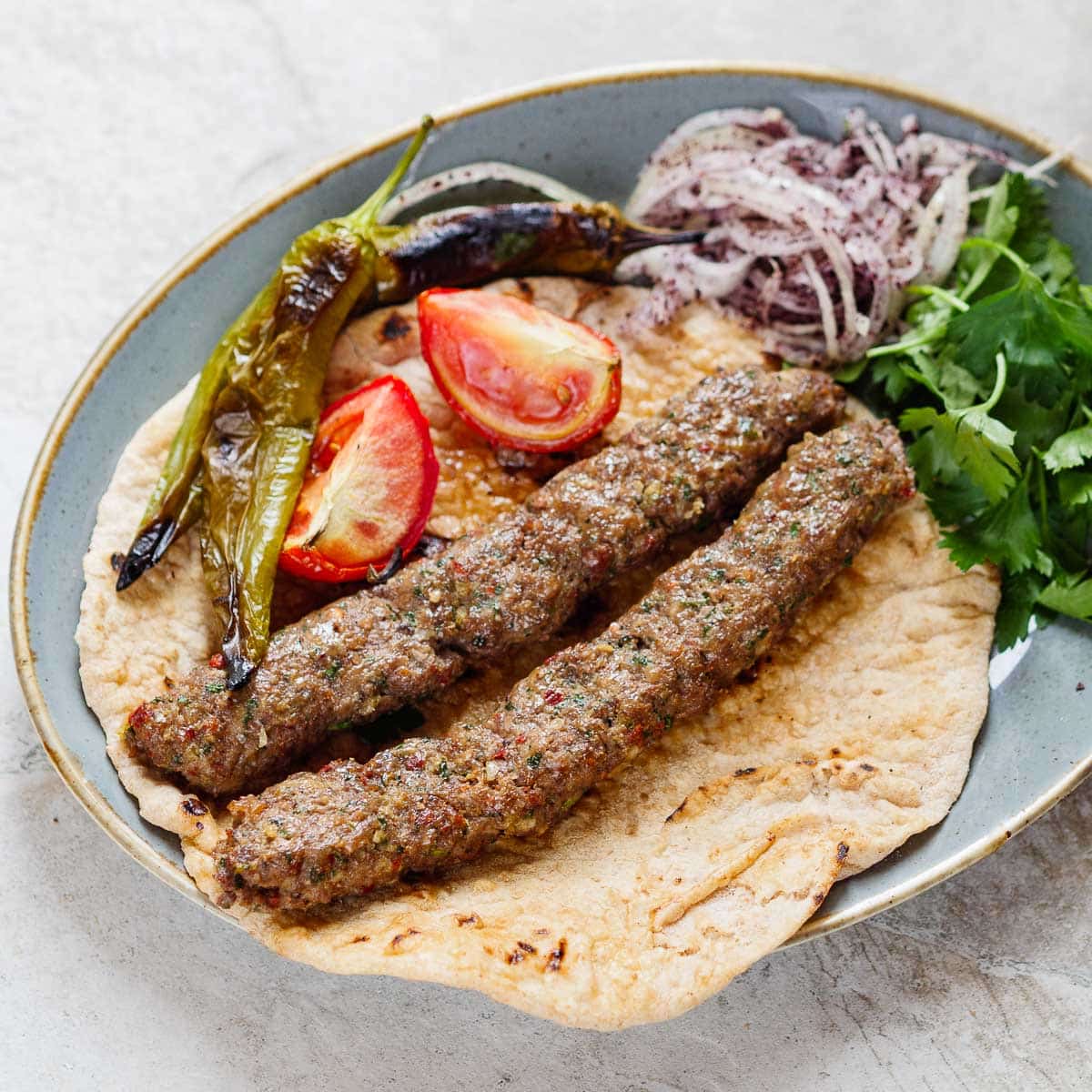
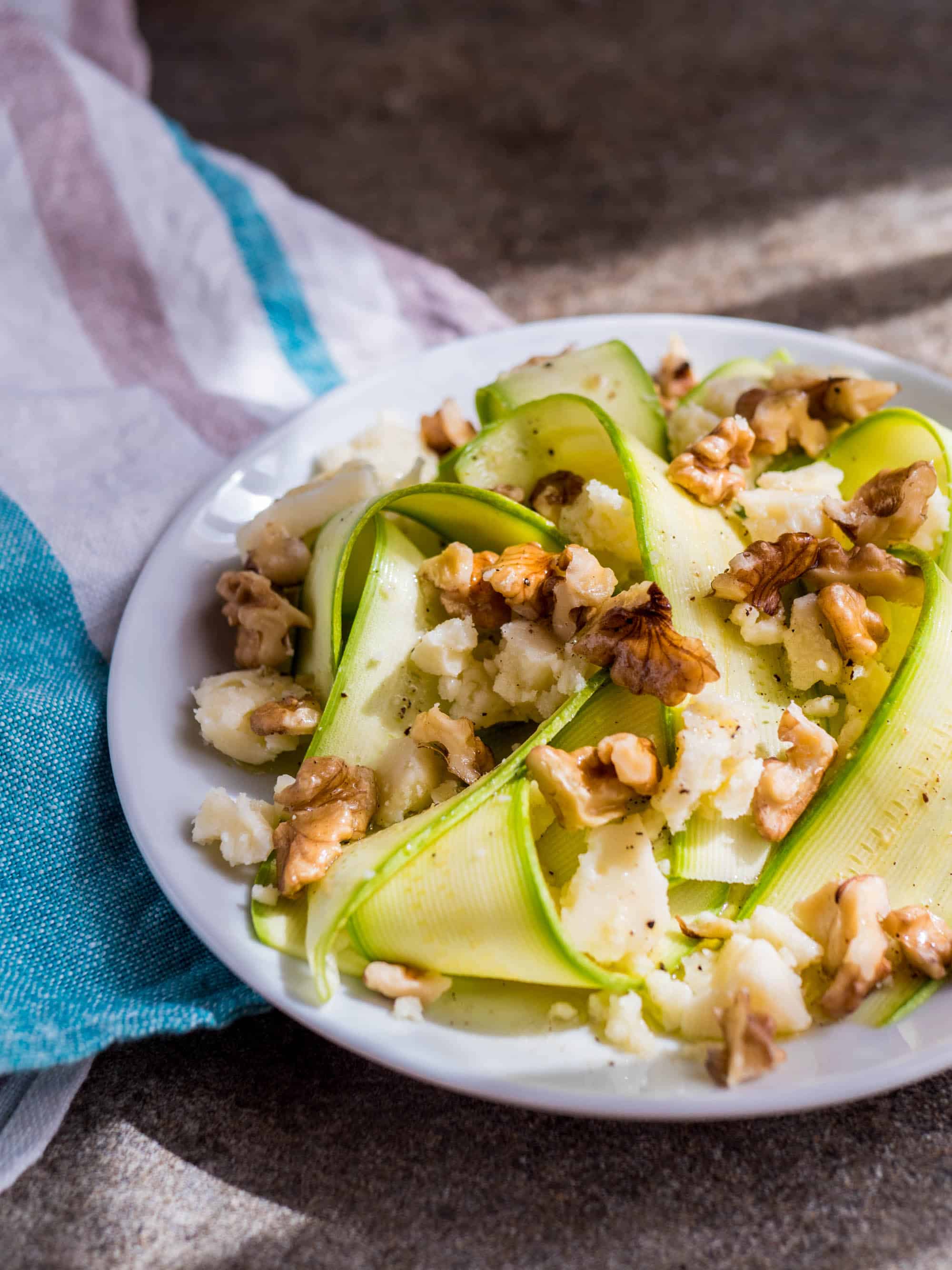
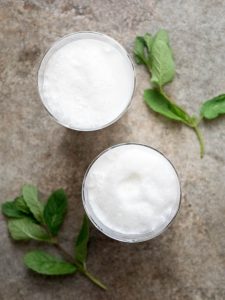

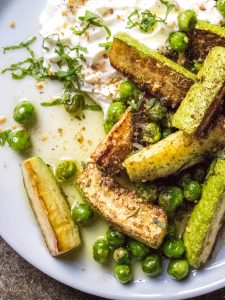




2 responses
Hi Vidar. I haven’t made this yet, I have a couple of questions first.
I live in Los Angeles, California, where we have a huge number of red chili peppers in the store to choose from. They are mainly from the Mexican kitchen, and vary in flavor and heat. Most are dried, but some can be found fresh. Shatta seems similar to the Italian Bomba fermented chili condiment, which uses dried Calabrian chilis. Any idea what kind is best to use for this recipe? Also, can I substitute the white vinegar with red wine vinegar?
Tusen takk.
Hi Simon. This should be made with fresh chilis. Feel free to use any type that suits your preferred level of hotness. Red wine vinegar should be perfectly fine. Good luck!